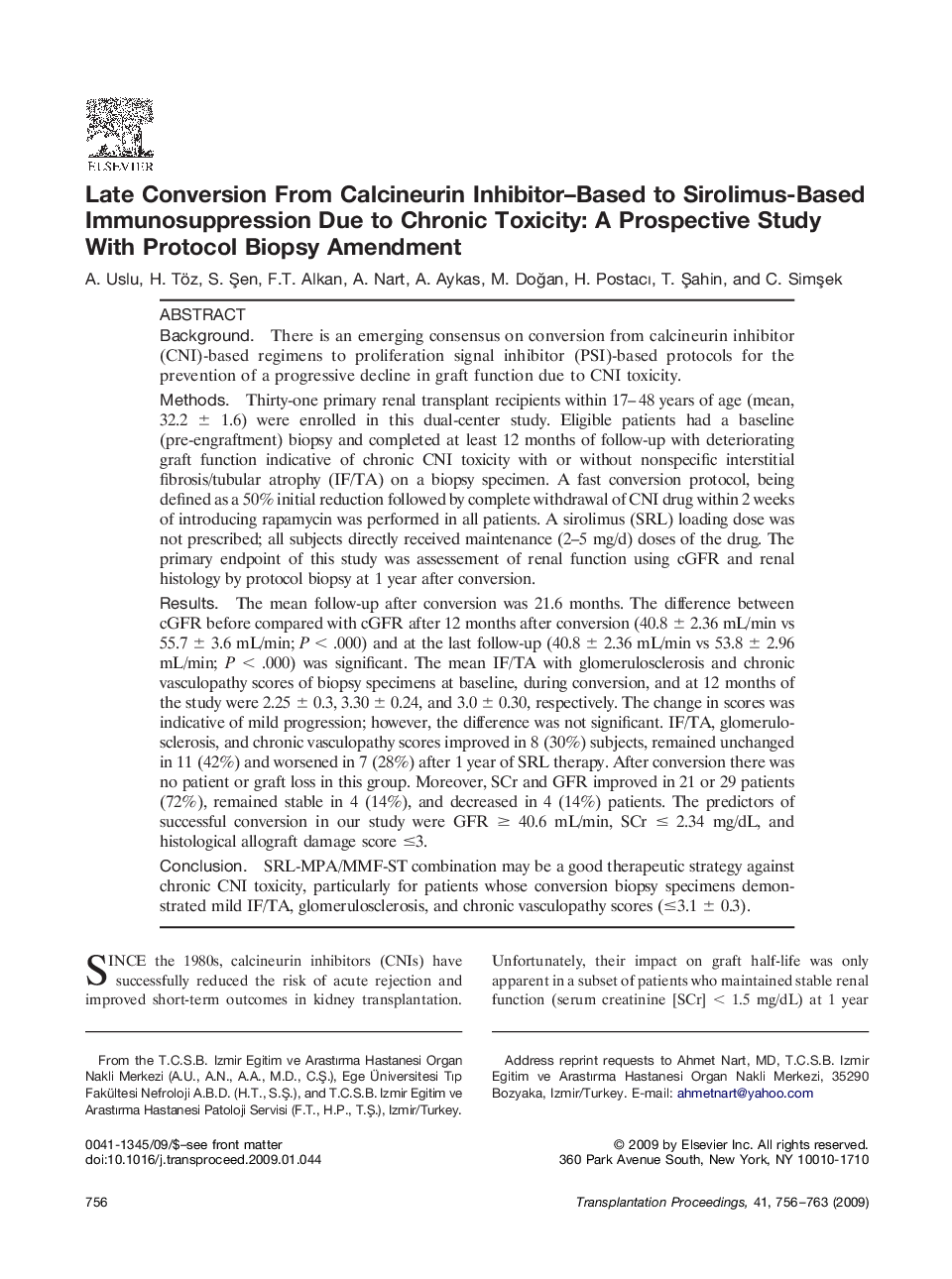| Article ID | Journal | Published Year | Pages | File Type |
|---|---|---|---|---|
| 4259566 | Transplantation Proceedings | 2009 | 8 Pages |
BackgroundThere is an emerging consensus on conversion from calcineurin inhibitor (CNI)-based regimens to proliferation signal inhibitor (PSI)-based protocols for the prevention of a progressive decline in graft function due to CNI toxicity.MethodsThirty-one primary renal transplant recipients within 17–48 years of age (mean, 32.2 ± 1.6) were enrolled in this dual-center study. Eligible patients had a baseline (pre-engraftment) biopsy and completed at least 12 months of follow-up with deteriorating graft function indicative of chronic CNI toxicity with or without nonspecific interstitial fibrosis/tubular atrophy (IF/TA) on a biopsy specimen. A fast conversion protocol, being defined as a 50% initial reduction followed by complete withdrawal of CNI drug within 2 weeks of introducing rapamycin was performed in all patients. A sirolimus (SRL) loading dose was not prescribed; all subjects directly received maintenance (2–5 mg/d) doses of the drug. The primary endpoint of this study was assessement of renal function using cGFR and renal histology by protocol biopsy at 1 year after conversion.ResultsThe mean follow-up after conversion was 21.6 months. The difference between cGFR before compared with cGFR after 12 months after conversion (40.8 ± 2.36 mL/min vs 55.7 ± 3.6 mL/min; P < .000) and at the last follow-up (40.8 ± 2.36 mL/min vs 53.8 ± 2.96 mL/min; P < .000) was significant. The mean IF/TA with glomerulosclerosis and chronic vasculopathy scores of biopsy specimens at baseline, during conversion, and at 12 months of the study were 2.25 ± 0.3, 3.30 ± 0.24, and 3.0 ± 0.30, respectively. The change in scores was indicative of mild progression; however, the difference was not significant. IF/TA, glomerulosclerosis, and chronic vasculopathy scores improved in 8 (30%) subjects, remained unchanged in 11 (42%) and worsened in 7 (28%) after 1 year of SRL therapy. After conversion there was no patient or graft loss in this group. Moreover, SCr and GFR improved in 21 or 29 patients (72%), remained stable in 4 (14%), and decreased in 4 (14%) patients. The predictors of successful conversion in our study were GFR ≥ 40.6 mL/min, SCr ≤ 2.34 mg/dL, and histological allograft damage score ≤3.ConclusionSRL-MPA/MMF-ST combination may be a good therapeutic strategy against chronic CNI toxicity, particularly for patients whose conversion biopsy specimens demonstrated mild IF/TA, glomerulosclerosis, and chronic vasculopathy scores (≤3.1 ± 0.3).
